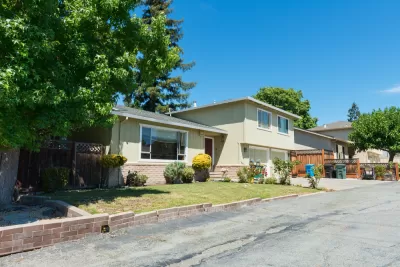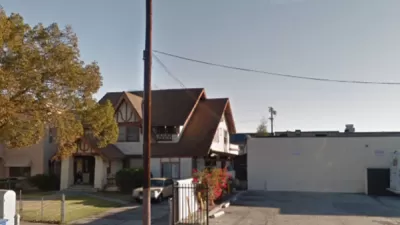Ultrawealthy residents have blocked a proposal to build townhouse developments in one of California’s most affluent communities.

In a piece in the New York Times, Erin Griffith describes the NIMBYist efforts of some residents of the small, wealthy Silicon Valley enclave of Atherton, where “chief executives and venture capitalists banded together over the specter that more than one home could exist on a single acre of land in the general vicinity of their estates.”
Atherton is tasked with adding 348 housing units as part of California’s Regional Housing Needs Assessment (RHNA), a topic Planetizen has covered extensively over the past months. As Griffith points out, “Many California towns, particularly ones with rich people, have fought higher-density housing plans in recent years, a trend that has become known as NIMBYism for ‘not in my backyard.’ But Atherton’s situation stands out because of the extreme wealth of its denizens — the average home sale in 2020 was $7.9 million — and because tech leaders who live there have championed housing causes.”
The backlash began when the city council approved an overlay district that would permit the construction of nine townhome developments this June. While residents brought up concerns such as increased traffic and crime, some straightforwardly expressed concern about their property values. The city’s mayor pointed out that the townhomes, which, by one estimate, could cost at least $4 million each, would not fit the state’s definition of affordable housing.
On August 2, the city removed the townhome proposal from its housing plan; according to Griffith, “it instead proposed a program to encourage residents to rent out accessory dwelling units on their properties, to allow people to subdivide properties and to potentially build housing for teachers on school property.”
FULL STORY: The Summer of NIMBY in Silicon Valley’s Poshest Town

Maui's Vacation Rental Debate Turns Ugly
Verbal attacks, misinformation campaigns and fistfights plague a high-stakes debate to convert thousands of vacation rentals into long-term housing.

Planetizen Federal Action Tracker
A weekly monitor of how Trump’s orders and actions are impacting planners and planning in America.

In Urban Planning, AI Prompting Could be the New Design Thinking
Creativity has long been key to great urban design. What if we see AI as our new creative partner?

King County Supportive Housing Program Offers Hope for Unhoused Residents
The county is taking a ‘Housing First’ approach that prioritizes getting people into housing, then offering wraparound supportive services.

Researchers Use AI to Get Clearer Picture of US Housing
Analysts are using artificial intelligence to supercharge their research by allowing them to comb through data faster. Though these AI tools can be error prone, they save time and housing researchers are optimistic about the future.

Making Shared Micromobility More Inclusive
Cities and shared mobility system operators can do more to include people with disabilities in planning and operations, per a new report.
Urban Design for Planners 1: Software Tools
This six-course series explores essential urban design concepts using open source software and equips planners with the tools they need to participate fully in the urban design process.
Planning for Universal Design
Learn the tools for implementing Universal Design in planning regulations.
planning NEXT
Appalachian Highlands Housing Partners
Mpact (founded as Rail~Volution)
City of Camden Redevelopment Agency
City of Astoria
City of Portland
City of Laramie





























